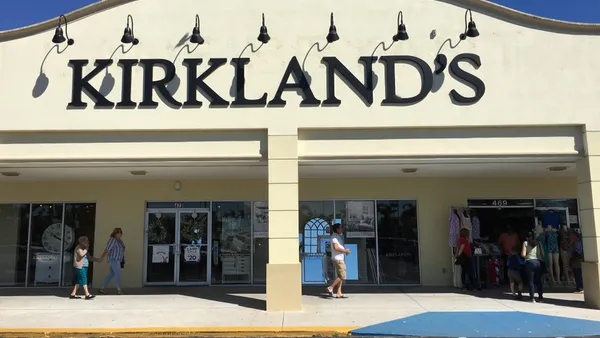Dive Brief:
-
The price war that has hobbled grocery retailers in the U.K. may be coming to the U.S., according to research from Wolfe Research, Moody’s and others detailed in a report Thursday in the Wall Street Journal.
-
Groceries from Philadelphia-area Wal-Mart stores were 5.8% lower than a year ago, while groceries from Wal-Marts in Atlanta and Southern California were cheaper by 4.9% and 2.7%, respectively, Wolfe Research found. Meanwhile, Wal-Mart’s groceries cost some 4% less than Kroger's, according to research from Barclays cited this month by Business Insider.
-
Food-at-home prices, which include “grocery store or supermarket food items,” rose 0.2% from January to February this year, but remain 1.7% lower than the same time last year, according to the United States Department of Agriculture. Grocery prices declined 1.3% overall in 2016, the first annual decline in supermarket prices since 1967. Prices declined 21.1% for eggs, 6.3% for beef and veal, 4.1% for pork and 2.3% percent for dairy, according to the USDA.
Dive Insight:
While much is made of pressure from Amazon on Wal-Mart — the e-commerce giant is widely seen as a major factor behind Wal-Mart’s $3.3 billion acquisition of Jet last year and the many e-commerce acquisitions it’s made since — it’s the arrival and expansion of no-frills grocery stores Lidl, Aldi and Aldi's retail sibling Trader Joe’s that may be the major drivers of Wal-Mart’s new grocery pricing schemes.
Wal-Mart has been testing a new pricing policy in some 1,200 U.S. stores in 11 Midwestern and Southeastern states in an effort to compete with German grocery retailer Aldi, for example. Last month, Wal-Mart and Amazon both met with consumer product vendors to put pressure on prices. Target CEO Brian Cornell has also said that it will compete better on price on commodity products like food, consumables and household products.
Aldi is in the midst of what it calls an accelerated expansion plan that will expand its U.S. footprint to nearly 2,000 stores by the end of 2018, an increase of almost 50% in five years. Trader Joe's, which is especially tight-lipped about new store openings, did not respond to a request for comment for a story by Retail Dive about the biggest threats to Wal-Mart's grocery ambitions last year, but runs a web page to invite recommendations about where to establish new stores, and another page features a slew of new store announcements.
Both Lidl and Aldi run their stores with limited merchandising and bottom-of-the-barrel prices: For example, you may only find one type of peanut butter in their stores, offered in just one size, and it will be a store-label brand at that. But with prices as much as one-third lower than many rivals, the approach defies the common notion that the U.S. consumer wants choice. Lidl also sells merchandise like apparel and home goods, further boosting its consumer appeal.
It looks like Wal-Mart is turning its attention to the competition, but it hasn’t fared well with a similar effort by its Asda grocery unit in the United Kingdom. Experts last year repeatedly told Retail Dive to look at Britain’s grocery wars to understand the devastation that could be wrought by Aldi and Lidl.
”[Asda] was the greatest division a few years ago,” Howard Davidowitz, chairman of New York retail consulting and investment banking firm Davidowitz & Associates, told Retail Dive. “Then Aldi and Lidl went across England, and now Asda is doing very badly.”














